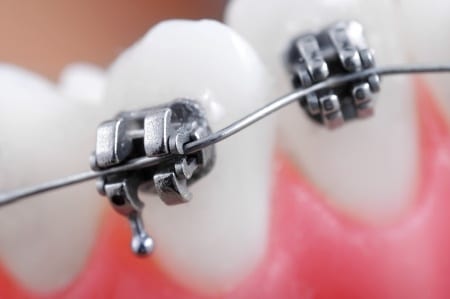Coined by the “father of modern orthodontics,” Edward Angle, the term essentially means “bad bite.” It refers to when your teeth’s “normal” fit (that being the top slightly over the top of the bottom and the molars—your back teeth—seating properly within one another) is not correctly aligned.
If you have been told that you have a malocclusion, it means you are in good company. As of 2010, an Emerich & Wojtaszek-Slominska study indicates that only between 30-40% of the population can claim to have a perfect bite.
However, you still might want to know what a malocclusion is. Here’s a little more about them to help you understand what your orthodontist means when he discusses them with you or your child.
Causes
Most malocclusions cannot be avoided as they are genetic traits and so are inherited. But some of them are a result of habits like extended pacifier use (past 3 years old), tongue thrusting or thumb sucking, too.
Other causes are as a result of injury or tumor related to the mouth or jaw. Teeth that are impacted or abnormally shaped, spaced or missing teeth, and ill-fitted dental and orthodontic also have been shown to cause malocclusions.
Types
Here are the types of misalignments you will most often see:
Upper-front teeth protrusion
Also known as an overjet (and buck teeth), it occurs when the upper-front teeth extend too far forward or the lower teeth do not extend far enough.
Overbite
This occurs when the upper-front teeth are too far over the lower front teeth, which may cause the lower teeth to bite into the roof of the mouth.
Crossbite
This is when the any or all of the upper teeth sit inside the lower teeth, leading to misaligned jaw growth and tooth stratification
Openbite
It occurs when the molars fit but the upper and lower front teeth do not overlap properly and leaves a space either in the front of sides of the mouth.
Crowding
This happens when teeth overlap due to insufficient room along the dental ridge for teeth to erupt properly.
Spacing
Spacing is caused by missing teeth or a larger dental ridge that creates unsightly spaces and gaps between teeth.
Misplaced midlines
This is when the center lines between the top and bottom center front teeth don’t meet and when the back bite does not fit properly when biting down.
Classification
Malocclusions fit into three basic classes:
Class I
This is the most common classification. Here the upper and lower molars are properly aligned, and the malocclusion—which is a small overlap of the upper teeth over the lower—is slight.
Class II (Known as retrognathism)
The lower molars fit the upper molars but are positioned toward the throat, drawing the chin back creating a significant overlap of the top teeth and jaw over the lower. It also has two further sub classes, Division I and Division II.
Class III (known as prognathism)
This the opposite of Class II with the lower molars are far forward causing a severe underbite where the lower teeth and jaw now protrude and overlap the upper.
As part of our commitment to giving you that perfect smile, our highly trained doctors at Orthodontic Associates will examine you and educate you on which (if any) malocclusion you might have. Once they have, they will offer you their expert advice on treatment options as well as recommendations on scheduling.
If you feel that you potentially have a malocclusion, you can set up an appointment to see one of our doctors at any of our nine convenient locations around Baltimore. As always, we look forward to making you smile!



